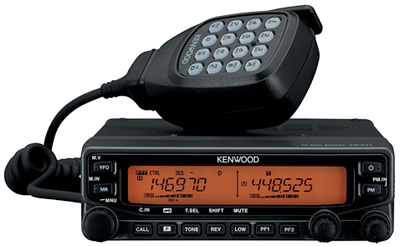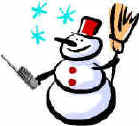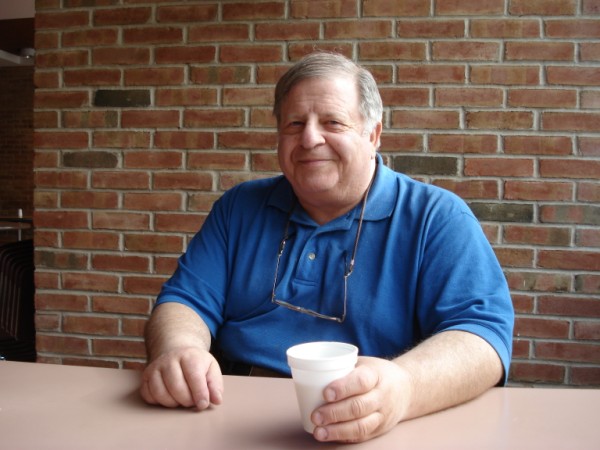Courage Center Handiham World Weekly E-Letter for the week of Wednesday, 30 January 2013
This is a free weekly news & information update from Courage Center Handiham System. Our contact information is at the end, or simply email handiham@couragecenter.org for changes in subscriptions or to comment. You can listen to this news online.MP3 audio stream:
http://www.handiham.org/audio/handiham.m3u
Download the 40 kbs MP3 audio to your portable player:
http://www.handiham.org/audio/handiham.mp3
Get this podcast in iTunes:

http://www.itunes.com/podcast?id=372422406
RSS feed for the audio podcast if you use other podcasting software:
http://feeds.feedburner.com/handiham
Welcome to Handiham World.
Do ham radio your way

Here's a picture for you: Think of a transceiver, a small one, tuned to a 160 meter frequency. The one I'm thinking of is an Icom IC-706 M2G, which makes sense because I have that very radio right here in my ham shack and I can use it on any band that it's capable of covering.
In my ham radio career that has not always been the case. Like you, I had radios that were capable of covering multiple bands, but I couldn't use all of them. Perhaps I hadn't installed an antenna for that band because it wouldn't it into my yard or because I just didn't know much about the band - the six meter band, for example. These days I am lucky to have a big enough back yard to have space for antennas, and even though they are modest by most standards they do allow me to get on every band that the radio covers.
Lots of my fellow hams are stuck in the ham radio doldrums because they live in places where antennas are either not practical or simply not allowed. Stealth antennas are sometimes less than ideal, and indoor antennas come with the baggage of RFI and RF exposure limitations. Going mobile or portable might be options, but both can be really inconvenient, and many Handiham members don't drive. Still others have at least some room for antennas but could never think of getting on a band like 160 meters because antennas for that band are hundreds of feet long.
So that's a problem. You want to get on the air, but the deck is stacked against you because of the antenna situation. What do you do?
Thankfully, the answer is at hand. You can now get on the air using a remote base HF station, and do so with newly-updated W4MQ software, thanks to Stan, W4MQ, who allowed us to use his code to make updates, and to Jose, KK4JZX, who did the heavy lifting on the new software coding. Our software team of testers also deserves thanks!
This special edition of your weekly e-letter will describe the remote base stations and how to set them up. Operating a remote can open up new HF bands for you, and you don't even have to venture outdoors to throw a wire up into a tree!
Patrick Tice, WA0TDA
Handiham Manager
Handiham Manager
Notice! We have new software as of 29 January 2013. Please upgrade as soon as possible.

This is a screenshot. Please go to the client installation page for the new software.
Stan Schretter, W4MQ, wrote the W4MQ Internet Remote Base software and was a recipient of the ARRL Technical Innovation Award. This software, offered as a free service to the amateur radio community, allows users to control an Internet accessable160m through 70cm amateur radio station, provided the host station covers those bands.
The W4MQ software has been tested on Windows XP, Vista, and Windows 7 and 8 32 and 64 bit. It does not run on any other operating system, though we think it may run under WINE in Linux. Your reports on this may be sent to wa0tda@arrl.net.
Handiham Stations: These pages refer to the setup for the two Handiham Remote Base stations W0EQO and W0ZSW. Both stations are available to Handiham members as a member service. Everyone is welcome to try the stations on receive. This may be done by licensed amateurs using EchoLink.
Would you like to try the stations right now?W4MQ Client Software: This is where you want to begin if you are interested in what the whole remote base thing is about, or if you are interested in installing the software to use someone else's existing remote base station via your computer.
Echolink operation:
If you would like to connect to the station via EchoLink to listen to the radio, you can search for W0ZSW-L, node 524906, and connect. Entering a frequency and pressing the enter key will allow you to change the radio's receive frequency from the EchoLink text box. Enter U, L, or A for Upper sideband, Lower sideband, or AM, respectively. One thing to remember is that EchoLink control only works on receive, not transmit, and it is only available if there is no control operator logged in to the W4MQ remote base software. W0ZSW is located in the Twin Cities of Minnesota.
Don't forget about our station at Courage North, in far northern Minnesota's lake country. If you would like to connect to the station via EchoLink to listen to the radio, you can search for W0EQO-L, node 261171, and connect. Just as with the other station, entering a frequency and pressing the enter key will allow you to change the radio's receive frequency from the EchoLink text box. Enter U, L, or A for Upper sideband, Lower sideband, or AM, respectively. One thing to remember is that EchoLink control only works on receive, not transmit, and it is only available if there is no control operator logged in to the W4MQ remote base software.
Guest Receive Operation via W4MQ software:
The stations can be operated in a receive only mode by using the W4MQ software. The username is "GUEST" with a password of "1234". Please note that the W4MQ software must be installed and configured as shown in the W4MQ Client Software page.
W4MQ Host Software: If you want to set up your own station as a remote base that can be accessed from the internet, you will need the Host software.
Remote Base Health Report for 30 January 2013
Remote Base health report: W0EQO is on line. W0ZSW is on line. The radio at W0ZSW is a Kenwood TS-480HX. The radio at W0EQO is a Kenwood TS-480SAT. Speech readout of frequency is available on both radios for our blind users and is enabled by default. We have included a "widget" on solar conditions from G4ILO on the website. Please visit http://www.handiham.org/drupal2/remote and report to us if the widget is screenreader accessible.
Users are asked to upgrade their software immediately!
http://handiham.org/remotebase/
Users are asked to upgrade their software immediately!
http://handiham.org/remotebase/
Correspondence:

Handiham NCS Mike, W1MWB, writes:
Do you remember the old days of ham radio when you could turn on a scanner or your VHF radio and tune to a repeater and there would always be activity on it, all hours of the day? There were local QSOs between hams, and autopatch calls, and you would always have someone to talk to.To quote KB5UJM, "Nowadays the repeaters are dead because no one is talking, because no one is talking, so no one is talking."
Robert, KB5UJM, of San Antonio Texas, is working to bring back the old days and make his repeater the busiest repeater on the air. He has EchoLink on the repeater as well as an autopatch and reverse patch system. If you want to call a specific person on the repeater, you could dial a number, and a special access code and the repeater would signal for that operator to answer. The autopatch allows you to dial any ten digit phone number. Robert believes that this technology is still useful because when all other systems go down, amateur radio will still be going strong.
You can listen to activity on Rob's repeater and learn more by going to:
http://www.qsl.net/kb5ujm/repeater
It is my belief that utilizing systems like Echolink and other VoIP systems will bring more people back to the VHF/UHF repeaters.
I hope you can use this in your e-letter/newscast.
Thanks & 73,
Mike, W1MWB
Wells, Maine
Ken, KB3LLA, likes the URL of the new Victor Stream®:
http://www.humanware.com/microsite/stream/index.html...and Pete K1PXE, writes about RFI hunting:
I almost forgot but here is another noise source. I have been getting a lot of line noise this past year. Sometimes, it does go away. At the end of the VHF contest I noticed something that sounded something like line noise except it had a bandwidth of only 100 kHz or so and it happened to be centered around 50.125 MHz at that time. Well, I knew it wasn't line noise. Over the next few days, it moved down the band a bit. I tried the easy things like turning things off in the shack. Finally, I routed the 6 meter antenna to my upstairs antenna so I could shut off the main breaker for the shack. That didn't do it. I kept thinking what it might be and suddenly it hit me. I grabbed my IC-502 and ran upstairs and ran into my bed room and the noise got louder. I pressed the power button on the Victor Reader Stratus and turned it off and the noise went away. The Victor Reader Stratus from Humanware is a desk top daisy book player with a disk drive. It draws a lot of power especially when you play a CD, so I leave it plugged in to the ac adapter most of the time and often I don't bother to press the power button to turn it off when I'm finished using it. Well, you can bet that practice will change from now on. Yes, it took me a few days but that was because I didn't try very hard. Finally, I got mad enough to put a real effort into finding the problem and I was successful.73, Pete K1PXE FN31KE
Handiham Nets are on on the air!

We are on the air daily at 11:00 USA Central Time, plus Wednesday & Thursday evenings at 19:00 USA Central Time.
The official and most current net news may be found at:
http://www.handiham.org/nets
http://www.handiham.org/nets
Join us on the Thursday evening Handiham Radio Club TechNet. The frequency in the local Minnesota repeater coverage zone: 145.45 FM, negative offset with no tone and 444.65 MHz with 114.8 Hz tone in the Twin Cities of Minneapolis and St. Paul Minnesota. The UHF repeater will be heard more easily in the Eastern Twin Cities. You will find our daily net on the air at 11:00 hours USA Central Time, with a Sunday roundtable session for a change of pace. A Wednesday evening session at 19:00 hours USA Central Time also offers a chance to take a guess at a trivia question (offered by some Net Control Stations) and visit with your friends on the air. Ideal for those who can't make the daily morning session! Then Thursday evening at 19:00 hours return to the Tech net and learn something new.
EchoLink nodes:Welcome to the NX0P repeater, 146.685 with a tone of 100Hz, Echolink node number 513917. The NX0P machine is near Albert Lea in far southern Minnesota, near the busy intersection of US Interstate highways 90 and 35.
*HANDIHAM* conference server Node 494492 (Our preferred high-capacity node.)
*VAN-IRLP*, node 256919
KA0PQW-R, node 267582
KA0PQW-L, node 538131
N0BVE-R, node 89680
Other ways to connect:
IRLP node 9008 (Vancouver BC reflector)
WIRES system number 1427
A dip in the pool

It's time to test our knowledge by taking a dip in the pool - the question pool, that is!
Let's go to the Technician Class pool:
T1E10 asks, "What type of control is used when the control operator is not at the station location but can indirectly manipulate the operating adjustments of a station?"
Possible answers are:
A. Local
B. Remote
C. Automatic
D. Unattended
This is an easy one - B, Remote. I just referenced it to remind you that remote operation is considered in our rules and regulations.
Please e-mail handiham@couragecenter.org to comment.
This week @ HQ

In response to a glowing comment about new volunteer reader Jim Perry, KJ3P, and his recording of the DAISY materials this month, I asked Jim for a brief bio of himself. We were wondering how he came to be such a professional-sounding reader! Here is his response:
Jim Perry, KJ3P - Brief Bio
- Licensed (Novice) in 1958.
- TV/Radio Engineer & Announcer in Philadelphia, Boston, Hartford (1964 to 2010), now retired
- Volunteer Reader: Learning Ally (formerly Recording for the Blind and Dyslexic)
- Started as a "DJ", but found out quickly that a local DJ's salary wouldn't pay the bills for a growing family. When the local station's Chief Engineer decided to leave, I put my ham radio technical experience to good use, plus a lot of studying at home, and obtained an FCC First Class Radiotelephone license (required in those days to work on a broadcast transmitter). Been a two-trick pony ever since (technical plus voice work).
- Favorite Job: Chief Engineer and Mid-day host at Philadelphia's Classical Music Station, WFLN(FM) (now defunct).
Another member service is the audio lectures for Technician, General, and Extra. All courses are available on line for your use whenever you want to study or review. Teaching is done with thoughtful attention to descriptions for those who are blind, and we promote understanding concepts rather than simply memorizing the question pool. If you would like to use this service but do not understand how, please contact us. We can also put the audio lectures on your DAISY digital NLS cartridge if you prefer that method instead of downloading or streaming audio from the website. Our latest audio lectures cover concepts in the Extra Class course. Please join us in whatever course you need, and also please let us know if you would like a specific topic covered in our Operating Skills lecture series.
Don't forget that Courage Center is a registered non-profit and your gifts to Handihams are tax deductible. We appreciate your support! Net information and news: The official and most current net news may be found at:
http://www.handiham.org/nets
Change in address for equipment donations: Please contact Pat, WA0TDA, before making any donation of equipment. My phone number is 763-520-0511 and my email address is pat.tice@couragecenter.org. The address is now the same as our postal mailing address. This should simplify our contact information.
Courage Center Handiham System
3915 Golden Valley Road
Golden Valley, MN 55422
Digital mailers are important: If you do mail a digital cartridge to us, please be sure that it is an approved free matter mailer. Otherwise it will quickly cost us several dollars to package and mail out, which is more than the cost of the mailer in the first place. We don't have a stock of cartridges or mailers and not including a mailer will result in a long delay getting your request back out to you.
DAISY audio digests are available for our blind members who do not have computers, playable in your Library of Congress digital player. Handiham members who use these players and who would prefer to receive a copy of the monthly audio digests on the special Library of Congress digital cartridge should send a blank cartridge to us in a cartridge mailer (no envelopes, please), so that we can place the files on it and return it to you via free matter postal mail. Your callsign should be on both the cartridge and the mailer so that we can make sure we know who it's from. Blank cartridges and mailers are available from APH, the American Printing House for the Blind, Inc.
Digital Talking Book Cartridge Catalog Number: 1-02610-00, Price: $12.00
Digital Talking Book Cartridge Mailer Catalog Number: 1-02611-00, Price: $2.50
Order Toll-Free: (800) 223-1839.
The Library of Congress NLS has a list of vendors for the digital cartridges:
http://www.loc.gov/nls/cartridges/index.html
Get it all on line as an alternative: Visit the DAISY section on the Handiham website after logging in.
Stay in touch

Be sure to send Nancy your changes of address, phone number changes, or email address changes so that we can continue to stay in touch with you. You may either email Nancy at hamradio@couragecenter.org or call her at 763-520-0512. If you need to use the toll-free number, call 1-866-426-3442.
Handiham Manager Patrick Tice, WA0TDA, may be reached at handiham@couragecenter.org or by phone at 763-520-0511.
Mornings Monday through Thursday are the best time to contact us.
The Courage Handiham System depends on the support of people like you, who want to share the fun and friendship of ham radio with others. Please help us provide services to people with disabilities. We would really appreciate it if you would remember us in your estate plans. If you need a planning kit, please call. If you are wondering whether a gift of stock can be given to Handihams, the answer is yes! Please call Walt Seibert, KD0LPX, at 763-520-0532 or email him at walt.seibert@couragecenter.org.
Call 1-866-426-3442 toll-free. -- Help us get new hams on the air.
Get the Handiham E-Letter by email every Wednesday, and stay up-to-date with ham radio news.
You may listen in audio to the E-Letter at Handiham Weekly E-Letter in MP3 format
Email us to subscribe:
hamradio@couragecenter.org
That's it for this week. 73 from all of us at the Courage Handiham System!
Pat, WA0TDA
Manager, Courage Handiham System
Reach me by email at:
handiham@couragecenter.org
Nancy, Handiham Secretary:
hamradio@couragecenter.org
ARRL is the premier organization supporting amateur radio worldwide. Please contact Handihams for help joining the ARRL. We will be happy to help you fill out the paperwork!

The weekly e-letter is a compilation of software tips, operating information, and Handiham news. It is published on Wednesdays, and is available to everyone free of charge. Please email handiham@couragecenter.org for changes of address, unsubscribes, etc. Include your old email address and your new address.





